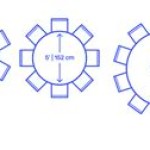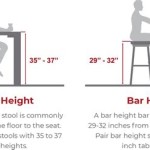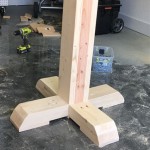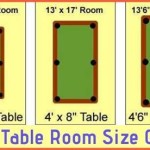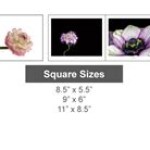The Cost of Table Lamps: A Comprehensive Guide
Table lamps are ubiquitous fixtures in modern homes and offices, providing functional illumination and decorative accents. The cost of a table lamp can vary significantly, depending on a multitude of factors ranging from the materials used in its construction to the brand reputation and design complexity. Understanding these factors is crucial for making informed purchasing decisions and ensuring that the chosen table lamp meets both aesthetic and budgetary requirements.
The price range for table lamps can span from budget-friendly options priced under $20 to high-end designer pieces that can cost several hundreds or even thousands of dollars. This broad range reflects the diverse materials, technologies, and manufacturing processes involved in their creation. Furthermore, the intended use of the lamp, such as for bedside reading, desk work, or general ambient lighting, can also influence the features and, consequently, the cost.
The following sections will explore the key determinants of table lamp cost, providing a detailed analysis of each element to assist in navigating the market and selecting the most suitable option for individual needs and preferences.
Materials and Construction
The materials used in the construction of a table lamp are a primary driver of its price. The base, shade, and internal components all contribute to the overall cost. Different materials offer varying levels of durability, aesthetic appeal, and manufacturing complexity.
Base Materials: The base of a table lamp provides stability and contributes significantly to its aesthetic. Common materials include:
* Metal: Metal bases can range from inexpensive steel to more costly brass, copper, or chrome. Steel is often used in modern, minimalist designs and is typically powder-coated or painted for protection and aesthetic enhancement. Brass and copper offer a more luxurious and traditional look but require more intricate manufacturing processes, increasing their cost. Chrome provides a sleek, contemporary appearance and is known for its durability, also impacting its price. * Wood: Wooden bases offer a warm and natural aesthetic. Softwoods like pine are less expensive but may lack durability. Hardwoods like oak, maple, or walnut are more durable and visually appealing but are also more expensive due to material costs and the increased skill required in their crafting. The finishing applied to the wood, such as stains, varnishes, or lacquers, also affects the overall cost. Intricate carvings or detailed woodworking will further increase the price. * Ceramic: Ceramic bases can be mass-produced at a relatively low cost, making them a popular choice for budget-friendly options. However, handcrafted ceramic bases, particularly those with intricate designs or unique glazes, can be considerably more expensive. The firing process and the quality of the clay used also play a role in the final price. * Glass: Glass bases offer a sophisticated and often translucent aesthetic. Simple glass bases can be produced relatively inexpensively, but handcrafted or mouth-blown glass bases, especially those with unique colors or patterns, can significantly increase the cost. The thickness and type of glass used also influence the final price. * Resin: Resin bases offer a versatile and often affordable option, allowing for complex shapes and textures to be easily molded. However, the quality of the resin and the finishing applied can vary greatly, impacting the overall durability and aesthetic appeal, and consequently, the price.Shade Materials: The shade of a table lamp diffuses the light and contributes to its overall aesthetic. Common materials include:
* Fabric: Fabric shades are popular due to their versatility and ability to diffuse light softly. Inexpensive fabric shades are typically made from cotton or polyester blends. More expensive options include linen, silk, or velvet, each offering a unique texture and visual appeal. The pleating, stitching, and overall construction of the fabric shade also contribute to its cost. Hand-stitched details or elaborate pleating will naturally increase the price. * Glass: Glass shades can provide a more focused and directional light. Clear glass shades are generally less expensive, while frosted, colored, or textured glass shades require more complex manufacturing processes and are therefore more expensive. Hand-blown glass shades are the most expensive option. * Paper: Paper shades, particularly those made from rice paper or other specialty papers, can offer a unique aesthetic. They are typically less expensive than fabric or glass shades, but their durability is also lower. * Metal: Metal shades offer a modern and industrial aesthetic. They are typically made from steel or aluminum and can be finished in a variety of colors and textures. The cost of a metal shade depends on the type of metal used and the complexity of the design.The construction quality of the lamp, including the sturdiness of the base, the alignment of the components, and the quality of the wiring, also significantly impacts the price. Lamps with robust construction and high-quality components are generally more expensive but offer greater longevity and safety.
Design and Brand
The design of a table lamp and the associated brand reputation are significant determinants of its cost. Unique and intricate designs, particularly those created by renowned designers, command a higher price. Brand reputation also plays a crucial role, with established brands often charging a premium for their products due to their perceived quality, reliability, and design expertise.
Design Complexity: Table lamps with complex designs, such as those featuring intricate carvings, hand-painted details, or unique shapes, require more labor and specialized manufacturing processes, thus increasing their cost. Similarly, lamps with innovative features, such as adjustable arms, dimmable lighting, or integrated USB ports, typically command a higher price due to the added engineering and components involved.
Designer Lamps: Table lamps designed by well-known designers or design firms are often priced at a premium. These lamps are often considered works of art and are valued for their unique aesthetic and design innovation. The brand recognition and prestige associated with these designers contribute to the higher price point.
Brand Reputation: Established brands that have a proven track record of producing high-quality and reliable table lamps often charge a premium for their products. This premium reflects the brand's investment in research and development, quality control, and customer service. Consumers are often willing to pay more for a lamp from a reputable brand, expecting it to last longer and perform better than a less expensive alternative.
Furthermore, limited edition or collectible table lamps can command significantly higher prices due to their rarity and exclusivity. These lamps are often sought after by collectors and design enthusiasts.
Technology and Features
The technology incorporated into a table lamp, as well as any additional features it offers, significantly influences its cost. Elements such as the type of bulb used, the presence of dimming capabilities, and integrated smart features can all contribute to a higher price point.
Bulb Type: The type of bulb used in a table lamp directly affects its energy efficiency, lifespan, and light quality, and consequently, its cost. Options include:
* Incandescent Bulbs: While incandescent bulbs were once the standard, they are now less common due to their low energy efficiency and short lifespan. Table lamps designed to use incandescent bulbs are generally less expensive but require more frequent bulb replacements and consume more electricity. * Halogen Bulbs: Halogen bulbs offer a brighter light output than incandescent bulbs but are also less energy-efficient than newer technologies. Table lamps that use halogen bulbs are typically priced similarly to incandescent lamp models. * Compact Fluorescent Lamps (CFLs): CFLs are more energy-efficient than incandescent and halogen bulbs but contain mercury and may not be compatible with all dimming systems. Table lamps designed to use CFLs are typically more expensive than those designed for incandescent or halogen bulbs. * Light Emitting Diodes (LEDs): LEDs are the most energy-efficient and longest-lasting bulb option available. Table lamps with integrated LEDs or designed to use LED bulbs are generally more expensive upfront but offer significant long-term cost savings due to their low energy consumption and extended lifespan. Additionally, some LED table lamps offer adjustable color temperature and dimming capabilities.Dimmability: Table lamps with dimming capabilities allow users to adjust the light output to suit their needs and preferences. Dimmable lamps typically require more complex circuitry and may also require a specific type of bulb, such as a dimmable LED bulb, which can increase the overall cost. However, the added versatility and energy-saving benefits of dimming can justify the higher price.
Smart Features: Table lamps with integrated smart features, such as Wi-Fi connectivity, voice control compatibility, or automated scheduling, command a significant premium. These lamps can be controlled remotely via a smartphone app or voice assistant, offering added convenience and customization. The integration of smart technology requires additional components and software development, contributing to the higher price point.
Other Features: Additional features such as USB charging ports, built-in speakers, or adjustable arms can also increase the cost of a table lamp. These features add functionality and convenience but require additional components and engineering.
In summary, the cost of a table lamp is determined by a complex interplay of factors, including the materials used in its construction, the design and brand reputation, and the incorporated technology and features. By carefully considering these factors, consumers can make informed purchasing decisions and select a table lamp that meets their specific needs and budget while enhancing the aesthetics of their living or working space. The long-term costs that need to be considered are the cost of electricity and the life span of the lightbulb. These factors could offset a possible low initial cost.

Pick Ur Needs Study Lamp Table Rechargeable Led Desk Touch Control Eye Caring Smart With Usb Charging For Student Skilled School

Bedside Lamp Touch Control Table With Usb A C Charging Ports 3 Way Dimmable Small Nightstand Glass Shade For Bedroom Living Room Com

Value Cost E27 Table Lamps Simple Classic Adjustable Metal Reading Lamp For Kid Studying Room Light China Led Cb2 Made In Com

Noaya Table Lamp Black Tft Home Purchase On Ventis

Value Cost E27 Table Lamps Simple Classic Adjustable Metal Reading Lamp For Kid Studying Room Light China Led Cb2 Made In Com

Simple Designs Basic 13 85 In White Standard Metal Desk Lamp With Flexible Hose Neck Ld1003 Wht Réno Dépôt

Modern Table Lamp Tall Bright Black Wrinkle Base Oval Mango Paper Shade Bedside Single Cost 160 Each Made In Los Angeles Jake

Modern Table Lamp Walnut Base Linen Shade Cost 170 Each Bedside Totem

Bedside Lamp Set Of 2 Touch Control Table With Usb A C Charging Ports 3 Way Dimmable Small Nightstand Glass Shade For Bedroom Living Room Com

Noaya S Table Lamp Brass Tft Home Purchase On Ventis

